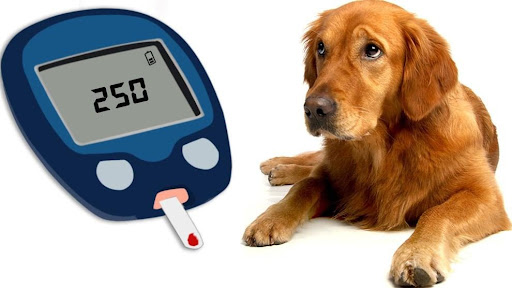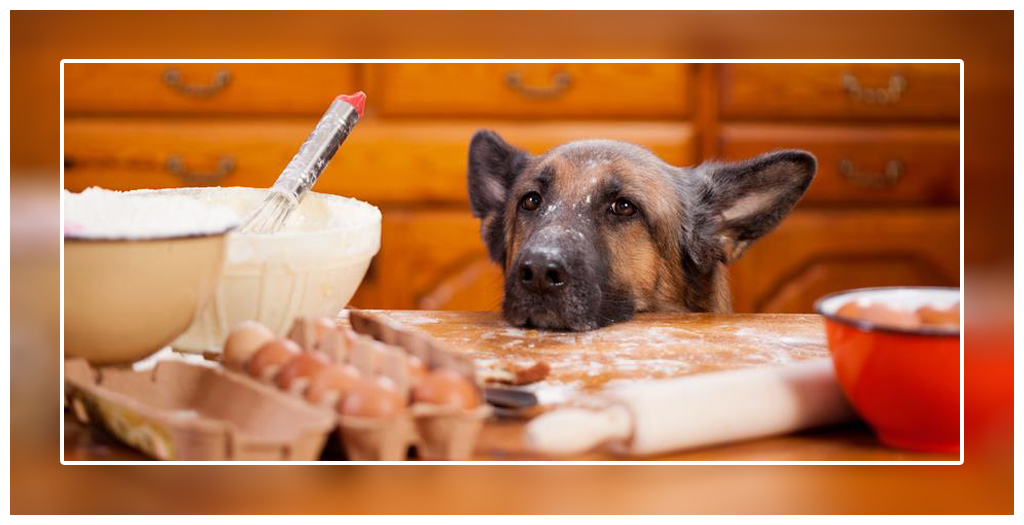Many dog owners consider their furry friends to be an important part of the family. It’s normal to feel pressured when health issues come up, particularly when dealing with a complex condition such as diabetes. However, diabetes in dogs can be treated with the proper information and a committed approach, enabling your cherished pet to live a long and active life. By discussing its symptoms, different causes, and the wide range of available treatments, this guide seeks to simplify canine diabetes.
Although diabetes mellitus (commonly referred to as “sugar diabetes”) is the most frequently discussed condition and the subject of much of this article, it is important to note right away that the term “diabetes” in dogs can refer to two different conditions. Diabetes insipidus is the other, far less common condition that deals with water metabolism instead of blood sugar regulation. We will discuss both, but since diabetes mellitus is more common in dogs.
What is Canine Diabetes?
Diabetes mellitus (DM) is a long-term condition where the body either doesn’t make enough insulin or can’t use it properly. Insulin is a hormone made by the pancreas that helps move sugar from the blood into the body’s cells for energy. Without enough working insulin, sugar builds up in the blood, and the body’s cells don’t get the fuel they need, which can eventually harm different organs.
Conversely, diabetes insipidus (DI) is an extremely uncommon disorder that affects dogs and is caused by either a lack of antidiuretic hormone (ADH) production or a lack of response to this hormone. Because ADH regulates water conservation, excessive water loss through urine results from its dysfunction.
Diagnosis and treatment of diabetes depend on knowing the type of diabetes.
- Diabetes Mellitus (DM)
Dogs with diabetes mellitus can have one of two main types:
- The most prevalent type of diabetes in dogs is called insulin-deficit diabetes (Type 1), which is defined by a complete lack of insulin. It happens when the immune system of the body unintentionally targets and kills the beta cells in the pancreas that produce insulin. To replace the lost hormone, dogs of this type need daily insulin injections.
- Type 2 diabetes, also known as insulin-resistant diabetes, is uncommon in dogs. In this case, insulin may still be produced by the pancreas, but its effectiveness is diminished because the body’s cells are less receptive to it. In addition to being more common in older, obese dogs, this form can also momentarily appear in unspayed female dogs during pregnancy or heat.
- Diabetes Insipidus (DI)
There are two types of diabetes insipidus as well:
- The brain is the source of central diabetes insipidus (CDI), which occurs when the hypothalamus is damaged and produces less ADH.
- Nephrogenic Diabetes Insipidus (NDI): This type is caused by the kidneys’ improper reaction to ADH.
Diabetes Symptoms in Dogs
Early detection of diabetes symptoms can greatly enhance your dog’s chances of recovery. While excessive thirst and urination are common symptoms of both diabetes mellitus and insipidus, other symptoms may be different.
Diabetes Mellitus Symptoms
- Polydipsia, or excessive thirst: You might notice that you need to refill the water bowl of your dog more frequently.
- Increased Urination (Polyuria): Your dog may need to go outside more often or may even begin to have “accidents” inside. This occurs when the kidneys draw more water into the urine in an attempt to eliminate extra sugar.
- Increased Appetite (Polyphagia): Your dog may appear constantly hungry even though they are eating more. The reason for this is that the cells aren’t receiving enough glucose to function.
- Weight Loss: Ironically, diabetic dogs frequently lose weight despite having a greater appetite because their bodies are unable to properly use glucose as fuel and start breaking down muscle and fat.
- Lethargy: When the body’s cells run out of fuel, there is a weakness and lack of energy.
- Cloudy Eyes (Cataracts): A common advanced complication of diabetes is cloudy eyes, or cataracts, which can cause vision impairment and even blindness.
- Recurrent Infections: Because high glucose levels in the urine provide an ideal environment for bacteria to grow, diabetic dogs are more susceptible to infections, particularly urinary tract infections (UTIs).
- Sweet-Smelling Breath: Diabetic ketoacidosis (DKA), a dangerous and potentially fatal condition, may be indicated by a fruity smell on the breath. Lethargy, vomiting, rapid breathing, and dehydration are additional symptoms of DKA.
Symptoms of Diabetes Insipidus
- Excessive Thirst and Urination: These are hallmark signs, similar to diabetes mellitus.
- Incontinence: Due to frequent and increased urination.
- Dehydration: Dogs may be unable to drink enough water to compensate for excessive urination. Signs include tacky gums, prolonged skin tent, and sunken eyes.
- Decreased Appetite and Weight Loss can also occur.
- Lethargy as with diabetes mellitus.
- Neurological Abnormalities: If central diabetes insipidus is caused by brain tissue injury, additional symptoms like seizures, tremors, uncoordinated gait (ataxia), or unusual behaviors may be seen. Severe dehydration symptoms like tacky gums, severe lethargy, and sunken eyes require emergency veterinary attention as they can lead to coma or death.
The causes of diabetes mellitus and insipidus are different.
Causes of Diabetes Mellitus
- Genetics: There may be a genetic component to the increased risk of diabetes in some breeds. Poodles, Miniature Schnauzers, Beagles, Dachshunds, Bichon Frises, Pugs, Samoyeds, Keeshonds, Australian Terriers, Fox Terriers, Cairn Terriers, Maltese, Toy Poodles, Lhasa Apsos, and Yorkshire Terriers are among them.
- Autoimmune Destruction of Pancreatic Cells: In Type 1 diabetes, the immune system kills the pancreatic beta cells that produce insulin, resulting in a complete lack of insulin.
- Obesity: Excess body fat, particularly visceral fat, is a major risk factor for Type 2 diabetes as it leads to insulin resistance.
- Chronic Pancreatitis: Insulin-producing beta cells may be harmed by persistent pancreatic inflammation.
- Hormonal Disorders: Disorders such as hypothyroidism or Cushing’s disease (hyperadrenocorticism) can affect insulin function or cause insulin resistance.
- Medications: Long-term use of certain medications, especially corticosteroids, can induce diabetes by increasing blood glucose and promoting insulin resistance.
- Age: Diabetes is more common in middle-aged to senior dogs, typically those aged 5 or older.
- Sex: Unspayed female dogs are twice as likely to develop diabetes as males.
Causes of Diabetes Insipidus
Diabetes insipidus is caused by either a lack of ADH production or a lack of response to ADH. Specific causes include:
- Traumatic Injury: Such as head trauma affecting the brain.
- Adverse Reaction to Medication: Can cause NDI.
- Cancer: Affecting the brain or kidneys.
- Underlying Metabolic Conditions: Like hyperadrenocorticism.
- Birth Defects: Affecting the brain (for CDI) or kidneys (for NDI).
- Kidney Disease or Infection: Can cause NDI.
Diagnosis
Diagnosing diabetes involves a thorough veterinary assessment and several tests.
Diagnosis of Diabetes Mellitus
- Clinical Signs: Your veterinarian will assess the symptoms you’ve observed, such as increased thirst, urination, appetite, and weight loss.
- Blood Glucose Levels: A definitive method, a fasting blood glucose level consistently above 200 mg/dL (11.1 mmol/L) is indicative of diabetes. Glucose curves, which monitor blood glucose over time after meals, help assess glucose management.
- Urine Analysis: This test detects glucose in the urine (glucosuria), which is a strong indicator of diabetes. Ketones may also be checked in the urine, especially if DKA is suspected.
- Fructosamine Test: This test measures average blood glucose levels over the previous two to three weeks, useful for confirming diagnosis and monitoring long-term glucose control.
- Other Blood Tests: Can reveal high liver enzymes and electrolyte imbalances.
Diagnosis of Diabetes Insipidus
Since DI is rare, ruling out other common causes of excessive thirst and urination is the first step.
- Physical Examination, Blood Tests, Urine Analysis: These are initial diagnostic steps.
- Hormone Level Testing: To check ADH levels.
- Diagnostic Imaging: To look for issues in the brain or kidneys.
- Water Deprivation Test: Historically used, this test involves withholding water for a period. If the urine remains diluted, DI is confirmed. However, this test is now considered outdated by some and has been removed from most offices due to the risk of making critically ill dogs worse.
- ADH Response Test: A dose of ADH is given. If urine concentrates, Central DI is confirmed. If it does not, Nephrogenic DI is confirmed.
Treatment Options
Every dog’s diabetes treatment plan is unique. The right approach depends on the type of diabetes and what’s causing it.
Treatment for Diabetes Mellitus
Pharmacological Treatments
- Insulin Therapy: This is the cornerstone of treatment for Type 1 diabetes and many Type 2 cases. Insulin injections are administered to replace or supplement the body’s insulin.
- Types of Insulin: Various types are used, including short-acting (Regular Insulin for emergencies), intermediate-acting (NPH, Lente for routine management), and long-acting (Glargine, Detemir for prolonged effects). Porcine lente insulin (Caninsulin®/Vetsulin®) is a common choice for dogs due to its similar amino acid sequence to canine insulin. Intermediate-acting NPH insulin has a shorter duration of action (4-10 hours) in dogs, often requiring twice-daily dosing. Glargine and detemir are long-acting options that can also be used; however, detemir is more effective in dogs than in humans, requiring careful low dosing.
- Administration: Insulin is typically administered once or twice daily, usually after meals. While traditional vials and syringes are used, insulin dosing pens have become available and offer benefits such as improved dose accuracy (especially for low doses), less pain, and ease of use, making them more engaging for many pet owners. Pens often feature enhancements such as half-unit dosing, large dials for visually impaired users, and memory functions for tracking dosage.
- Oral Hypoglycaemic Agents: These treatments are not usually the first choice for dogs, since insulin works better. In some dogs with Type 2 diabetes, though, they may still be an option your vet considers.
Nutritional Therapy
A carefully controlled diet is essential for managing diabetes mellitus.
- Dietary Management: Aims to stabilize blood glucose, prevent post-meal spikes, and manage body weight.
- High-Fibre Diets: Insoluble fiber (e.g., green beans, sweet potato, oats, flaxseed, pumpkin, brown rice) slows digestion and glucose absorption, leading to more gradual blood sugar increases.
- Complex Carbohydrates: Low-glycemic index (GI) complex carbohydrates (e.g., sweet potatoes, lentils, fava beans, oats, barley) are recommended as they break down slowly.
- Protein: Lean protein sources (e.g., plant-based foods, chicken, turkey, fishlike salmon and sardines) are important for maintaining muscle mass and avoiding excessive fat intake. Fish also provides omega-3 fatty acids, which can reduce inflammation and improve insulin sensitivity.
- PUFAs (Polyunsaturated Fatty Acids): Omega-3 fatty acids from sources like seaweed, algae, algal oil extracts, fish oil supplements, and flaxseed reduce inflammation, improve insulin sensitivity, and support cardiovascular health.
- Prebiotics, Probiotics, and Postbiotics: These support gut health, which can indirectly enhance metabolic functions and insulin sensitivity.
- Prebiotics: Non-digestible fibers (e.g., inulin, fructooligosaccharides, mannan-oligosaccharides) facilitate beneficial gut bacteria.
- Probiotics: Live beneficial bacteria (e.g., Bacillus, Lactobacillus, Bifidobacterium species) maintain a healthy gut microbiome.
- Postbiotics: Metabolites by-products of probiotics (e.g., short-chain fatty acids like butyrate) modulate immune response and enhance gut barrier function.
Herbal and Natural Treatments (Holistic Approaches)
These can complement traditional treatments but should always be discussed with a veterinarian.
Herbal Supplements
- Cinnamon: May improve insulin sensitivity and lower blood glucose.
- Fenugreek: Reduces blood glucose and improves insulin sensitivity by slowing carbohydrate absorption.
- Turmeric (Curcumin): Potent anti-inflammatory and antioxidant properties can improve insulin sensitivity and reduce blood glucose.
- Gymnema Sylvestre: Reduces glucose absorption in intestines and stimulates pancreatic beta cell regeneration.
- Ginger: Can increase insulin levels and decrease fasting glucose.
- Asian Ginseng (Panax Ginseng): Promotes insulin release and increases insulin receptors.
- Cordyceps: May reduce weight loss, thirst, and hyperglycemia.
- Aloe Vera: Can reduce fasting blood glucose and triglyceride levels.
- Bilberry: Known for reducing blood glucose and preventing complications like cataracts.
- Rehmannia: Helps regulate glucose metabolism.
- Dandelion: Stimulates insulin secretion from the pancreas.
- Madagascar Periwinkle (with fenugreek): Synergistic effect in lowering blood glucose.
- Rosemary: Can modulate blood glucose levels.
- Basil: Known for blood sugar-lowering and antioxidant properties.
- Black Seeds (Nigella Sativa): Can reduce blood glucose levels and improve insulin sensitivity, with antioxidant and anti-inflammatory effects.
- Other beneficial herbs include Nettle, Garlic, Safflower, Asafoetida, Bauhinia, and Bitter Melon, among many others.
- Adaptogens: Ashwagandha, Holy Basil, and Rhodiola Rosea can help the body cope with stress, which influences cortisol levels and insulin function, potentially improving insulin sensitivity and blood sugar control.
- Acupuncture: May help regulate blood sugar, boost energy, and reduce stress.
- Massage Therapy: Aids circulation, relaxation, and stress management, fostering a stronger bond with your pet.
- Essential Oils: Lavender and chamomile, when used safely and under guidance, can provide stress relief and calm.
- Exercise: Tailored, consistent routines help maintain a healthy weight, enhance mood, and support glucose regulation, but should avoid sudden spikes or drops in glucose.
- Energy Therapies (Reiki): Non-invasive therapies can promote relaxation and reduce anxiety.
Foods to Avoid for Diabetic Dogs 
To maintain stable blood glucose levels and prevent complications, certain foods should be strictly avoided:
- High Glycaemic Index (GI) Foods: Cause rapid spikes in blood glucose. Examples include white bread and white rice.
- Sugary Treats: Commercially available dog treats with added sugars, honey, or other sweeteners can cause dangerous blood glucose spikes.
- Processed Foods: Often high in salt, sugar, and unhealthy fats, exacerbating insulin resistance and contributing to obesity.
- Fatty Foods: Unhealthy trans and saturated fats (e.g., bacon, sausage, fried foods) worsen insulin resistance and contribute to obesity.
- Full-Fat Dairy Products: High in fat and lactose, which can spike blood glucose.
- Certain Grains and Starches: Corn, cornmeal, and starchy vegetables like potatoes can quickly convert to glucose and should be replaced with lower-GI options.
Treatment for Diabetes Insipidus
- Central Diabetes Insipidus (CDI): Treatment involves lifelong supplemental ADH medication.
- Nephrogenic Diabetes Insipidus (NDI): Treatment includes using diuretics to reduce dehydration risk and addressing the underlying cause, such as removing causative medications or treating kidney infections.
- Severe Dehydration: Hospitalization and intravenous (IV) fluids may be necessary.
Recovery and Management of Canine Diabetes
Caring for a dog with diabetes, especially diabetes mellitus, is a long-term responsibility. With the right care, though, most dogs can still live happy, normal lives.
Diabetes Mellitus Management
- Structured Routine: A diabetic dog needs a consistent daily schedule for meals and insulin injections.
- Monitoring: Regular monitoring of blood glucose levels (either at home with a glucometer or through vet visits) and urine for glucose and ketones is crucial.
- Consistent Exercise: Maintaining a moderate and consistent exercise routine is vital to avoid sudden glucose fluctuations. Devices like the PetPace collar can help monitor activity levels.
- Preventing Complications: Owners should be aware of signs of dangerously low blood sugar (hypoglycemia) or high blood sugar complications like ketoacidosis.
- Prognosis: While Type 1 diabetes is generally not curable, it is manageable. The prognosis for both Type 1 and Type 2 diabetes is typically good with diligent treatment and owner commitment.
Diabetes Insipidus Management
- Prognosis: Generally good with proper treatment.
- CDI: Is a lifelong condition, but prognosis is good with appropriate lifelong treatment.
- NDI: Can be cured if the underlying disease is identified and treated. If the underlying disease is chronic, NDI may lead to relapses.
- Access to Water: Untreated dogs or those with DI must always have access to water to prevent severe dehydration, stupor, coma, or death.
Conclusion
Hearing that your dog has diabetes can be scary, but with the right mix of veterinary care, medication, a well-managed diet, and supportive therapies, your dog can still enjoy a great quality of life. Stay in close contact with your vet to find and adjust the best plan for your pet. Most importantly, your daily attention and care will make all the difference for your dog’s health and happiness.














